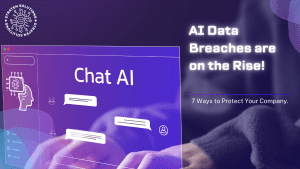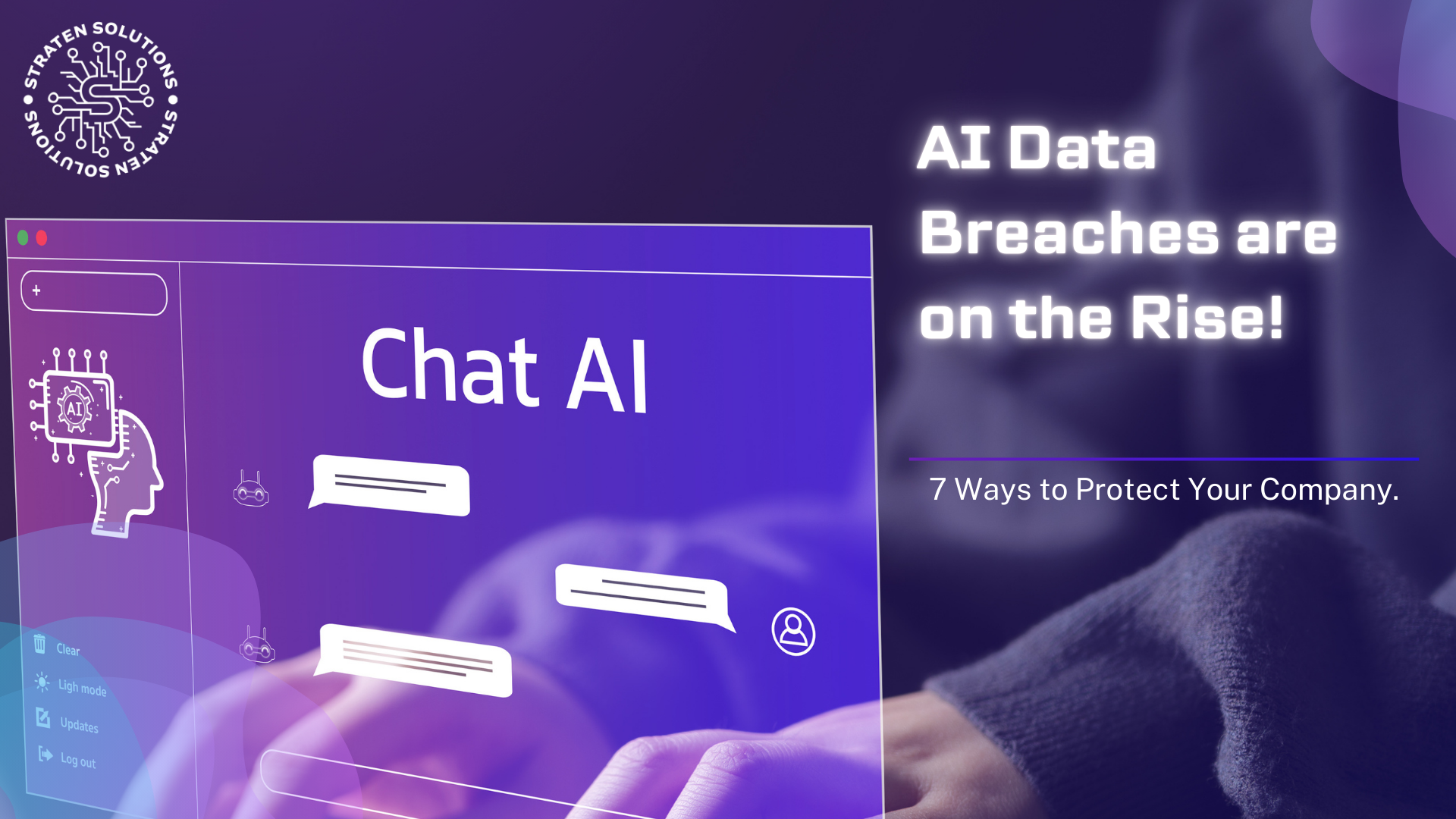
Artificial intelligence paired with data breaches is a dangerous combination. Artificial intelligence (AI) is quickly shaking up industries, offering businesses smart solutions and automation chops. But amidst this wave of innovation lurks a concern worthy of an accountant’s sharp eye: AI data breaches. As AI embeds deeper into our systems, the risks mount. The data it handles—from collection to analysis—becomes a bullseye for cyber mischief.
Recent findings on AI security breaches unveil a shocking reality: 77% of businesses reported an AI breach in the past year alone. This poses a substantial risk to organizations no matter the size, potentially exposing sensitive data, compromising intellectual property, and disrupting crucial operations.
Don’t panic yet. Let’s unpack why AI data breaches are trending upwards and what savvy steps you can take to fortify your company’s invaluable information.
Why AI Data Breaches Are Escalating
Several factors fuel the surge in AI data breaches:
- Expanding Attack Surface: With AI adoption skyrocketing, so does the number of cyber entry points. Hackers can now target vulnerabilities in AI models, data pipelines, and the infrastructure backing them.
- Data, the Lifeblood of AI: AI thrives on data—oodles of it. This treasure trove makes for a tantalizing target, from customer insights to business secrets and financial records. Even employees’ personal details aren’t safe from prying eyes.
- “Black Box”: Many AI models resemble a cryptic riddle wrapped in complexity. This opacity makes spotting vulnerabilities and tracking data flow a Sherlock Holmes-level challenge. Transparency? More like trying to balance the books in the dark!
- Evolution of Cyber Shenanigans: Cybercriminals are the ultimate innovators, perpetually concocting new ways to exploit security gaps. Techniques like adversarial attacks can manipulate AI models, spewing out incorrect outputs or leaking sensitive data faster than you can say “audit.”
The Potential Impact of AI Data Breaches

The aftermath of an AI data breach can hit close to home:
- Financial Setbacks: Think fines, legal battles, and a damaged reputation—impacting your bottom line and budget planning.
- Operational Hiccups: AI systems keep things humming smoothly. A breach? It could mean disrupted operations, slower workflows, and frustrated clients waiting in the queue.
- Intellectual Property Exposure: Your AI models aren’t just tools; they’re your unique creations. A breach might spill your secret formulas, giving competitors an edge in the innovation race.
- Privacy Concerns: AI data breaches can compromise sensitive customer and employee information. This can raise privacy concerns and potentially lead to regulatory action.
Take Proactive Approach: Protecting Your Company from AI Data Breaches
Here’s the good news, there are effective steps you can take to minimize the risk of AI data breaches. Follow these strategies to safeguard your firm.
1. Data Governance
Implement robust data governance practices:
- Data Classification: Categorize data based on its sensitivity.
- Access Controls: Clearly define who can access which data and under what conditions.
- Monitoring: Regularly supervise data usage to detect anomalies.
2. Security by Design
Integrate security into every phase of AI development:
- Secure Coding: Adhere to secure coding practices to strengthen defenses.
- Vulnerability Assessments: Conduct routine assessments to identify and address potential weaknesses.
- Penetration Testing: Simulate attacks to uncover vulnerabilities before they are exploited.
3. Threat Modeling
Conduct regular threat modeling exercises:
- Identifying Weaknesses: Identify potential weaknesses in AI systems and prioritize them for remediation.
- Resource Allocation: Allocate resources effectively to mitigate identified risks.
<H3>4. Employee Training</H3>
Educate staff on AI security:
- Awareness: Train employees to recognize and report suspicious activities.
- Best Practices: Promote practices that ensure data protection in daily operations.
5. Security Patch Management
Keep AI software and hardware up to date:
- Regular Updates: Apply the latest security patches promptly to mitigate known vulnerabilities.
- Maintenance: Ensure hardware systems are regularly maintained for optimal security.
6. Security Testing
Regularly test AI systems for security
- Testing Procedures: Conduct rigorous security tests to identify and address potential vulnerabilities.
- Preventive Measures: Take proactive steps to prevent breaches and maintain robust security.
7. Stay Informed
Stay updated on AI security best practices and emerging threats:
- Knowledge Gathering: Stay informed through reputable cybersecurity resources.
- Networking: Participate in industry events to learn from peers and experts.
- Continuous Learning: Engage in online courses and workshops focused on AI and security.
By implementing these proactive measures, you can significantly reduce the risk of AI data breaches and ensure the security of your operations. I mean, we at Straten Solutions we do this, and you can trust that it is trusted and approved.
Partnerships for Enhanced Protection
Teaming up with a reliable IT provider who knows the ins and outs of AI security can make a world of difference. They can bring expertise in threat detection, vulnerability assessments, and penetration testing tailored specifically for AI systems.
Also, consider software vendors offering AI-powered anomaly detection tools. These tools can sift through data patterns to spot unusual activities that might signal a potential breach.
Get Help Building a Fortress Against AI Data Breaches

AI offers great benefits, but its security risks can’t be ignored. Need a trusted partner for cybersecurity?
Our experts will assess your entire IT infrastructure, both AI and non-AI. We’ll help you implement proactive measures to monitor and protect your systems, giving you peace of mind in today’s digital world.






